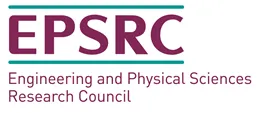CONSULT
While the new generation of wellness sensors are able to collect an increasing array of clinically useful data, such data is currently disconnected both from the patient context, provided by the Electronic Health Record (EHR), and from the treatment plan, based on current best-evidence guidelines and customised by the patient’s GP.
In cases of multi-morbidities, there is no clear strategy for combining multiple guidelines into a coherent whole. Furthermore, personalised treatment plans are rigid and do not adapt dynamically to changes in a patient’s circumstances. Finally, the record of patient condition and decisions made is not routinely captured in a standardised way, preventing effective learning about the treatment effectiveness.

To address these problems, this new CONSULT project will combine wellness sensors with intelligent software running on mobile devices, to support patient decision making, and thus actively engage patients in managing their healthcare. Our system will use computational argumentation to help patients follow treatment guidelines and will learn details specific to individuals, personalising treatment advice within medically sound limits. Critically, the software will be able to detect conflicts in treatment guidelines that frequently arise in the management of multiple morbidities. The software will be able to provide advice regarding which treatment options to follow, when the conflicts can be resolved by the patient and when a resolution will require an intervention from a clinician. The software will thus help patients handle routine maintenance of their conditions, while ensuring that medical professionals are consulted when appropriate. This will enable patients to take charge of their own conditions, while being fully supported in both traditional and new, innovative ways. By routinely capturing the data provenance of the recommendations made, actions taken, and the resulting patient progress, the software will provide valuable insight into the effectiveness of treatments and underlying guidelines in multi-morbidity scenarios.
Helping patients to manage their own care will reduce the demands made on medical professionals, while reaping the health benefits of self-management. Integrating real-time information from monitoring devices will make it possible to distinguish between situations that need attention from medical professionals, and those that do not, reducing the number of extra appointments that patients and doctors need to schedule. Using real-time information will also make it possible to detect changes in the course of a disease, allowing pre-emptive actions to be taken, and thus reducing the amount of time that someone suffering from a long-term condition may have to spend in hospital. Overall, our approach will not only provide more efficient care, but also allow care to be better tailored to the needs of each individual.
The technology will be evaluated across multiple dimensions in a proof-of-concept study, engaging stroke patients, their carers and medical professionals, while capitalising on KCL’s world-leading position in stroke research and its established patient groups, particularly those connected to the South London Stroke Register programme.
Aims
The proof-of-concept aims to:
- Integrate data from wellness sensors with a patient’s electronic health record to create a personalised, live picture of the patient’s condition that can be combined in situ with treatment guidelines to produce a dynamic care plan according to the patient’s current circumstances
- Develop methods for data-backed decision making that can help patients make well-informed choices about actions to take in self-managing their conditions on a daily basis, adapting their long-term care plans and involving medical professionals as necessary
- Implement these methods in a decision-support system, deployed in mobile and browser formats, which is customised not only to the care of a particular patient, but also offers different views depending on whether the user is the patient, a carer or clinician.
The prototype system will target stroke patients, aiming to prevent secondary stroke.
Our Partners

The Engineering and Physical Sciences Research Council (EPSRC)

